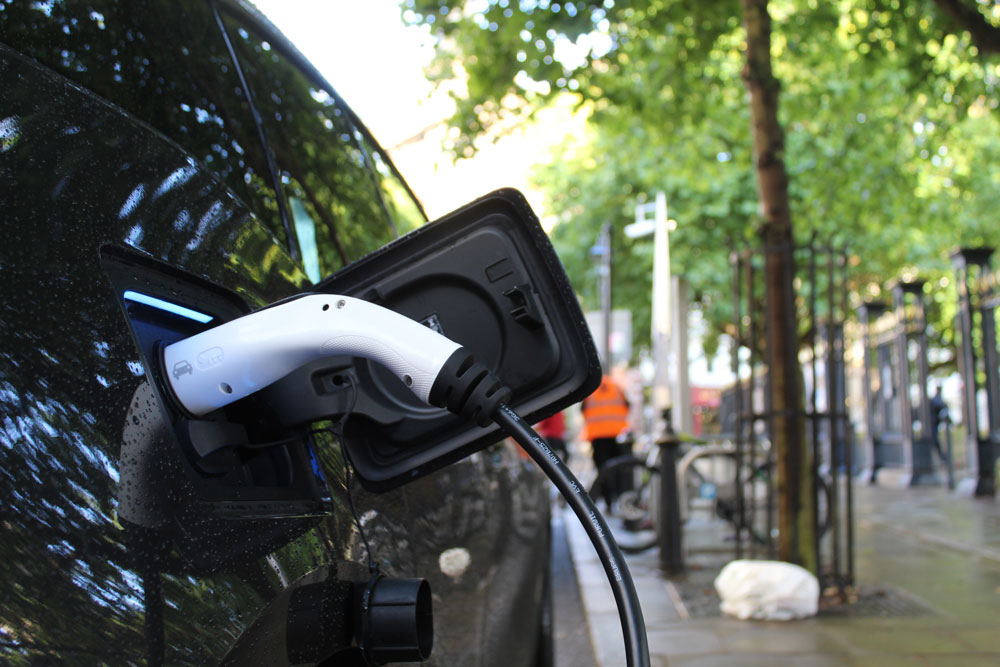Putting power where it’s needed

Fleets are major purchasers of electric vehicles and so local authorities must consider their needs when devising charging infrastructure plans. Catherine Bowen, senior policy advisor at the BVRLA, explains how the fleet sector and local authorities can work together to achieve a fleet-friendly charging network
Power presents itself in a multitude of ways. Funding and financial backing brings purchasing power, while the old adage that ‘knowledge is power’ rings true in all walks of life.
When it comes to the roll out of a suitable EV charging infrastructure, we know there is no one-size-fits-all approach. Up to now, it has been seen by many as a numbers game. The conversation must evolve. Quantity of chargepoints in the ground is but one element that will contribute to a healthy, useable network.
On that backdrop, the balance of power is changing.
Responsibilities that have historically sat with those in Westminster are being pushed to all corners of the UK. Local Authorities are being given the ability to implement their own infrastructure plans, while programmes such as the Local Electric Vehicle Infrastructure (LEVI) fund, give access to funding not seen before.
The race to decarbonise our road transport will now be won or lost at a local level.
Authorities are being asked to spearhead new public charging infrastructure strategies, but most of them are under-resourced, under-funded and dealing with a host of competing transport priorities.
This is good news for the fleet sector. The collective ability to influence decisions and see a fleet-friendly charging network has never been stronger. Those developing local plans are hungry for support. They want to make the right decisions and want to hear from any stakeholders, organisations and constituents that can guide them.
Lack of EV strategy
Our research earlier this year showed that nearly two thirds of local authorities in the UK are yet to publish an EV strategy. More than that, we uncovered that 40 per cent are yet to engage with fleets.
Local authorities either don’t know where to start with their plans or are overlooking the critical role that fleet users play in the road transport network. This must change. The responsibility to create that change sits with the fleet sector.
The fleet sector is pulling the nation forward on its drive to decarbonise, but charging infrastructure is failing to keep up. Only by being at the table and bringing local decision makers on the journey with us can we influence plans that will work for everyone.
The government’s LEVI funding is hugely important, but policymakers also need support in understanding the needs of different road users, whether it is those based locally or those travelling through. Fleets are already living and breathing the transition to EVs and are familiar with the barriers, frustrations, and benefits that it brings.
Getting the right infrastructure in the right place at the right time requires close collaboration between everyone in the electric vehicle ecosystem. That includes drivers, fleet operators, charge point operators (CPOs), distribution network operators (DNOs), local authorities (LAs) and national government. Only when all of those voices are heard can a network be developed from an informed base.
Where fleets charge
That is why the BVRLA launched its Fleet Charging Guide. Updated for 2023, the Guide provides a high-level overview of how and where fleets charge, delivering tangible recommendations for policymakers to implement.
Within those recommendations, the Fleet Charging Guide provides a list of seven top tips for local authorities to consider.
The first is having a single point of contact. This makes it easy for local fleet operators to get in touch and listen to their views.
The second is to take advantage of support and funding. Trade bodies, industry representatives and fellow LAs are well placed to provide guidance.
The next recommendation is to share and learn from best practice. See where you can learn from experiences of others.
Local authorities are also encouraged to set an example. Lead the way by decarbonising their own fleet and adapting wider business travel plans.
Another recommendation is to use tenders effectively and to build in elements that will futureproof the network and investment.
Local authorities are also encouraged to explore innovative solutions to see what is out there and where multiple solutions could address multiple use cases.
The final recommendation is for local authorities to effectively signpost chargepoints. Make it clear to drivers not only where chargepoints are, but what power output they have and if the bays are suitable for larger vehicles too.
Fleet Friendly Charging Pledge
Local authorities want to play their part. They want to lead from the front and demonstrate to their constituents that they are committed to road transport decarbonisation. Through our engagements with authorities across the UK, we are seeing them officially commit to having fleets in mind. Through signing the BVRLA’s Fleet Friendly Charging Infrastructure Pledge, local authorities are confirming that they will consider fleet operators and drivers in charging infrastructure plans and strategies; engage with the fleet sector to understand their charging requirements; and provide fleet-focused EV charging information and guidance.
The more authorities that commit to the pledge at a local level, the more we will see fleet needs being met nationally. It is something we are actively pushing for at the BVRLA currently and making great strides in. The collective support of the wider fleet sector can only make our case stronger.
Industry professionals are encouraged to make contact with their local authority to start the conversation today. Through the BVRLA’s suite of local authority resources – including the Fleet Charging Guide and Fleet Friendly Charging Index – it is possible to check the progress made by each authority in the UK before making contact and sharing the recommendations from the Guide.
Only by making our voices heard, sharing our needs and presenting solutions, will we see positive change to make the EV transition successful. The power is ultimately in our hands.






